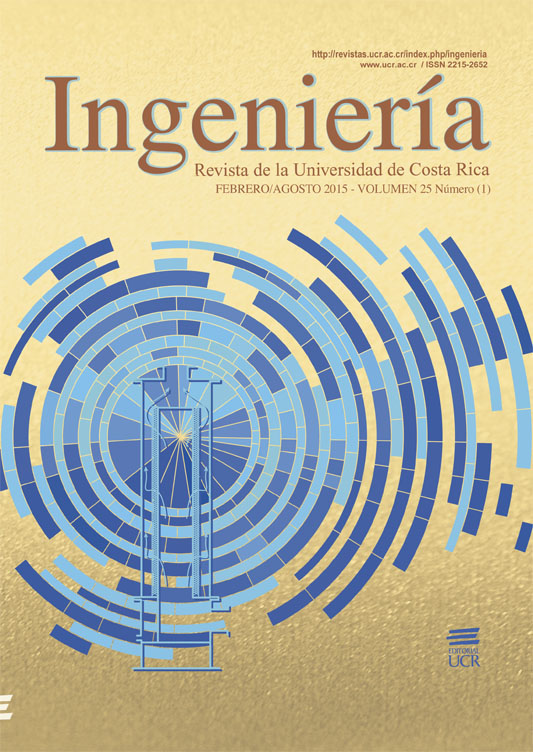Resumen
El reconocimiento automático de la altura musical permite crear software capaz de identificar las notas tocadas por un instrumento musical. En éste artículo explicamos cómo es posible incorporar un algoritmo de reconocimiento de altura a un proyecto de software, para ello empleamos la implementación en C del algoritmo SWIPEP. El proyecto escogido es un juego de memoria en el cual el usuario escucha una secuencia de notas y las toca a la computadora usando una flauta dulce soprano. Adicionalmente se explican los conceptos básicos para entender el fenómeno acústico involucrado. El artículo va dirigido a todos aquellos estudiantes con conocimientos básicos en programación que quieran añadir procesamiento de sonido a sus proyectos.Citas
Akant, K., Tech, M., Pande, R. y Limaye, S. (2010). AccurateMonophonic Pitch Tracking Algorithm for QBH and Microtone Research. The Pacific Journal of Science and Technology, 11 (2). Disponible en http://www.akamaiuniversity.us/PJST11_2_342.pdf
Camacho, A. (2007). Swipe: A Sawtooth Waveform Inspired Pitch Estimator for Speech and Music. (Tesis doctoral, Universidad de Florida). Disponible en http://www.cise.ufl.edu/~acamacho/publications/dissertation.pdf
Castro, E. (1999). LibsndfileAppStore. Disponible en http://www.mega-nerd.com/libsndfile/
Cheveigné, A. y Kawahara, H. (2002). YIN, a fundamental frequency estimator for speech and music. The Journal of the Acoustical Society of America. Disponible en http://audition.ens.fr/adc/pdf/2002_JASA_YIN.pdf
Duifhuis, H., Willems, L. y Sluyter, R. (1982). Measurement of pitch in speech: An implementation of Goldstein’s theory of pitch perception. Acoustical Society of America 71(6), pp 1568-1580.
Frigo, M. y Johnson, S. (1997). Fastest Fourier Transform in the West. Página web. Disponible en http://www.fftw.org/
Gorman, K. (2011). SWIPE0 pitch extractor software. Center for spoken language understanding, Oregon Health and Science University. Disponible en http://www.ling.upenn.edu/~kgorman/c/swipe/
Hermes, D. (1988). Measurement of pitch by subharmonic summation. Journal of the Acoustical Society of America 83, pp 257-264.
Hiroshi Ishii. (2004). Bottles: A Transparent Interface as a Tribute to Mark Weiser. IEICE transactions on information and systems, 87 (6), pp. 1299-1311. Recuperado el 22 de agosto de 2014 en http://ci.nii.ac.jp/
naid/110003214002/en
Rochester Chapter of the American Recorder Society. (2014). Recorder Frequency Ranges. Disponible en http://www.rochars.org/recorder_freqency_ranges
Schroeder, M. (1968). Period Histogram and Product Spectrum. New Methods for FundamentalFrequency Measurement. The Journal of the Acoustical Society of America, 43 (4), pp. 829.
Songquito UG 2014 (haftungsbeschrnkt). (20015). Songs2See - Learn to Play by Playing. Disponible en http://www.songs2see.com/
Sun, X. (2000). A Pitch Determination Algorithm-Based on Subharmonic-to-Harmonic Ratio. The 6th International Conference of Spoken- Language Processing. (pp. 676-679)
Wolfe, J. (2014). Note names, MIDI numbers and frequencies. University New South Wales, Music Acoustics Laboratory. Disponible en http://www.phys.unsw.edu.au/jw/notes.html


